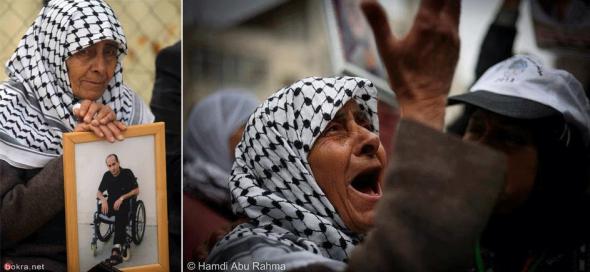On the 17th April Palestinians gathered in the occupied territories to commemorate the 39th Palestinian Prisoners’ Day. This day was first commemorated by the Palestinian National Council, under the authority of the PLO, in 1974. On this date the Palestinian prisoner, Mahmoud Bakr Hijazi, was released in the first exchange between Palestinians and the Israeli occupation.
The current report by the Ministry of Prisoners states that there are 4900 Palestinian detainees in Israeli prisons; this includes 235 children and 14 women. Amongst these detainees are former ministers, dozens of political leaders and journalists. The report also states there are 168 detainees held without charge or trial. The data indicates that 523 of the prisoners are sentenced to life imprisonment, and figures at the end of March this year showed there were 1,200 patient prisoners in need of treatment; 85 suffering from various disabilities and 25 with cancer. The number of martyrs who have died in prison, including recently Maysara Abu Hamdiyeh who had cancer, is 204.
Sit-ins, demonstrations and rallies were organized across the West Bank and Gaza to commemorate the Prisoners’ Day, show solidarity and unite efforts for their release. In Jerusalem many Jerusalemites gathered in front of Damascus Gate, holding photos of prisoners from their city (of which there are 265) and in particular pictures of the prisoner Samer al-Issawi who has been on hunger strike for 271 days. The father of prisoner Bilal Abu Hussein, stressed the particular need to do something about the old and sick prisoners. He said: “We miss our prisoners every day of the year and not only on the Palestinian Prisoners’ Day. We are concerned for them because of the occupation policies towards them that lead to other illness due to deliberate medical negligence and even to death”.
In Jericho and the Jordan Valley a protest was carried out in front of the headquarters of the International Committee of the Red Cross. Speakers from the Ministry of Prisoners and Prisoners’ Club stressed the necessity of continuing events in solidarity with prisoners in Israeli jails and uniting all official and popular efforts for their release.
In Ramallah many gathered around Yasser Arafat roundabout (Sa’a Square) holding Palestinian flags and slogans calling for the world, the UN and human rights organizations to intervene for the release of prisoners and an end to their suffering.
In Nablus hundreds participated in a march from a compound in the east of the city towards Martyr square. The mothers of prisoners called on the international community, especially the European Union, to pressure Israel and work for the unconditional release of all the prisoners. A group of the families of various prisoners left messages for their loved ones written in blood on white banners as an expression of their support for the struggle of the prisoners.
In Salfit, the governor Salfit Isam Abu Bakr said in a speech during the festival to mark Prisoners’ Day that: “this occasion was an opportunity to remember the great suffering and pain that has and is still being inflicted on many prisoners who represent the elite and the best sons of the Palestinian people”. He added that the “response to the arrogance of the occupation is unity and the rejection of any dispute, calling for a strategy and a national approach based on overall national unity”.
The secretary general of Fatah in Salfit, Abdul Sattar Awad, added that “the month of April held many painful memories due to events that have occurred and impacted our people; especially the anniversary of the martyrdom of Abu Jihad Khalil al-Wazir”. The festival included a mass rally in which the governor participated, events and poetic readings, and the lighting of the flame of solidarity which announced the start of the Prisoners’ Day.

